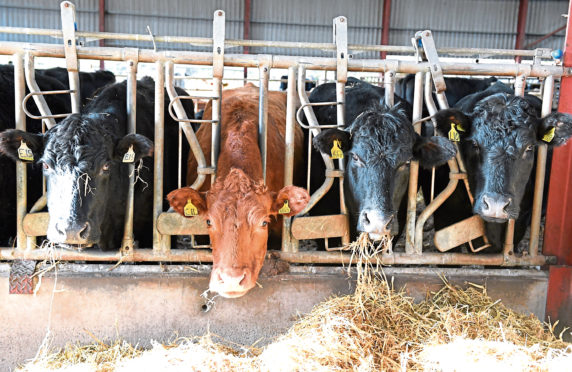Ambitious plans for a new beef production scheme that will tackle both greenhouse gas emissions and the decline of Scotland’s suckler herd are being drawn up under the guidance of former NFU Scotland president Jim Walker.
Mr Walker, who has a reputation in farming circles of making things happen, has been tasked by the Scottish Government with finding a way of supporting the suckler sector as it attempts to mitigate its environmental impact and identify practical ways in which emissions can be reduced.
On Monday he will chair the first meeting of a group of what he called “ambitious and enthusiastic 20 and 30-year-old beef farmers” as they identify a range of measures that will make the industry more efficient and create climate change benefits.
“We will brainstorm ideas to improve cattle efficiency, nutrition, feed efficiency, genetics, soils, lime and the whole carbon agenda – including how to use nitrogen fertiliser and slurry better,” he said.
“Then we’ll work them into a completely new type of scheme and spend the summer making sure officials are focused on the delivery of it.
“We’ll bring it back to the group in September to get a scheme up and running in 2020 and into 2021.
“I want it to be a five-year scheme, which will be opt-in to start with and it will be for progressive farmers.”
Mr Walker pointed out there was “plenty of money kicking about” to support such a scheme, including convergence funds and the £40 million announced last week to help Scottish farming industry tackle climate change.
He also insisted the scheme could lead to a way of differentiating premium beef produced in Scotland from dairy beef, meat produced in Brazil, or hormone-treated beef from the United States.
“It’s no longer enough to use the Scotch brand and wrap it up in tartan with health and animal welfare schemes – that should be entry point,” he said.
“We will want to appeal to the consumers of today and tomorrow who are interested in products that genuinely can play an auditable and verifiable role in climate change, and I’m certain in Scotland we can do that.”
He claimed efficiency improvements in the industry could lead to 10% more calves going to slaughter from the current suckler herd.
“That’s an extra 40,000 head a year. We just need to do better with what we’ve got,” he said.
“At the moment we’re at the behest of big abattoirs and multiple retailers who tell us what they’re prepared to pay.
“This is maybe a way of breaking that stranglehold at the same time as supporting farming in a different way.”
